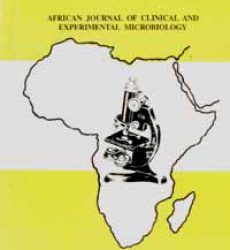1,2Ogban, G. I., *1,2Iwuafor, A. A., 3Idemudo, C. U., 2Ben, S. A., 4Ushie, S. N., and 1,2Emanghe, U. E.
1Department of Medical Microbiology and Parasitology, University of Calabar, Calabar, Nigeria
2Department of Medical Microbiology and Parasitology Main Laboratory, University of Calabar Teaching Hospital, Calabar, Nigeria
3Department of Public Health, University of Calabar, Calabar, Nigeria 4Department of Medical Microbiology and Parasitology, Nnamdi Azikiwe University, Awka, Nigeria *Correspondence to: tonyiwuafor@unical.edu.ng; +2348033441539
Abstract:
Background: Severe infections caused by carbapenem-resistant Enterobacteriaceae (CRE) have mortality rate exceeding 50%. On the strength of this, this study sought to determine the prevalence of urinary tract infection (UTI) in pregnancy caused by CRE and associated risk factors in University of Calabar Teaching Hospital (UCTH), Nigeria, with the aim of making recommendations that can stem the tide of UTI caused by this bacterial strain in the hospital. Continue reading “Urinary tract infections in pregnancy caused by carbapenem-resistant Enterobacteriaceae in University of Calabar Teaching Hospital, Nigeria: An emerging therapeutic threat”

